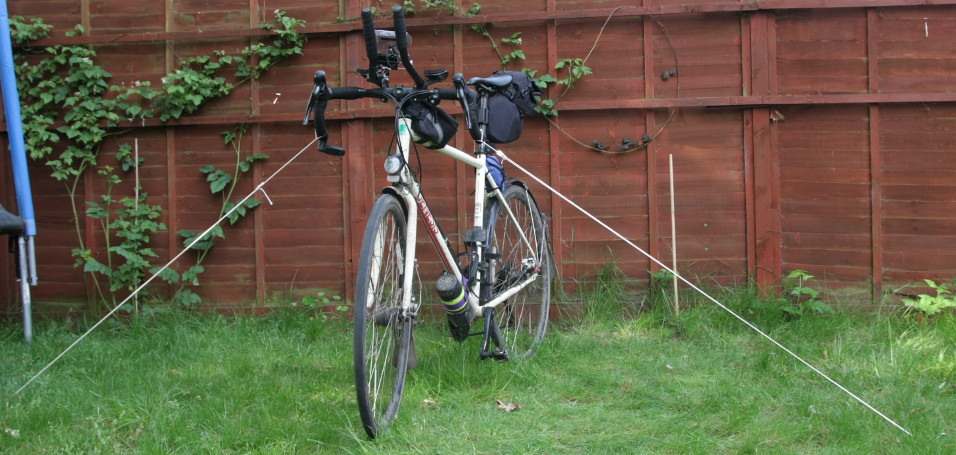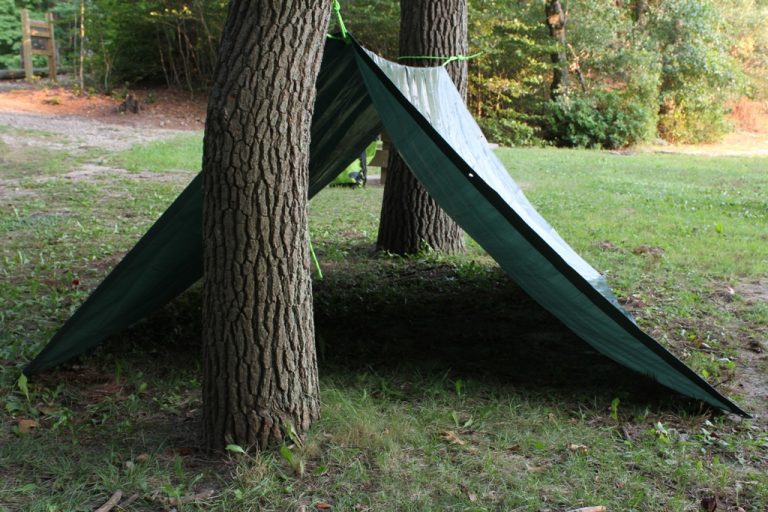Next year I might find myself needing a lightweight touring/camping shelter, suitable for overnight stops at camspites and at the roadside. One option is a single-hoop bivvy tent (example) but many of these aren't much lighter than my hiking tent, and they're rather expensive. A hoopless bivvy bag seems more like emergency kit to me (with the exception of the Salewa which allows the hood to be lifted with a cord to a branch, fence, or bike). My choice is rather restricted by my height - I'm too tall for many of them. We can assume a decent weather forecast before setting out for a few days, so some need for rain-proofing (and face cover) but not planning to be out in a storm.
As an alternative I wondered about getting a tarp, and using the bike itself (held up with guy ropes and possibly a kickstand) to lift the head end. This would have the advantage of no poles to carry, making packing very easy. Has this been done before? Are there any plans in existence? I've got reasonable DIY/craft skills and equipment but not really for working on fabric beyond minor modifications.
Now I've done it, here are some stats demonstrating the usefulness of using the bike to support a tarp, over about 2 years:
| Setup | No of nights | Notes |
|---|---|---|
| Tarp between trees | 2 | Of which one sharing |
| Tarp over bike, campsite | 5 | Campsites wouldn't allow me to tie anything to their trees (if present). Includes one on my flat-bar hybrid, which worked equally well |
| Tarp over bike, wild (or my garden) | 7 | Of which one sharing, over a smaller bike than mine. Often no trees available, or where there are suitable trees, the ground is very uneven |
| Tarp between bike, bush, and rocks | 1 | Beach rocks were too big to insert pegs between, but too small to use as weights |
| Tent carried by bike, campsite | 6 | For comparison. Requires rack and panniers |
















